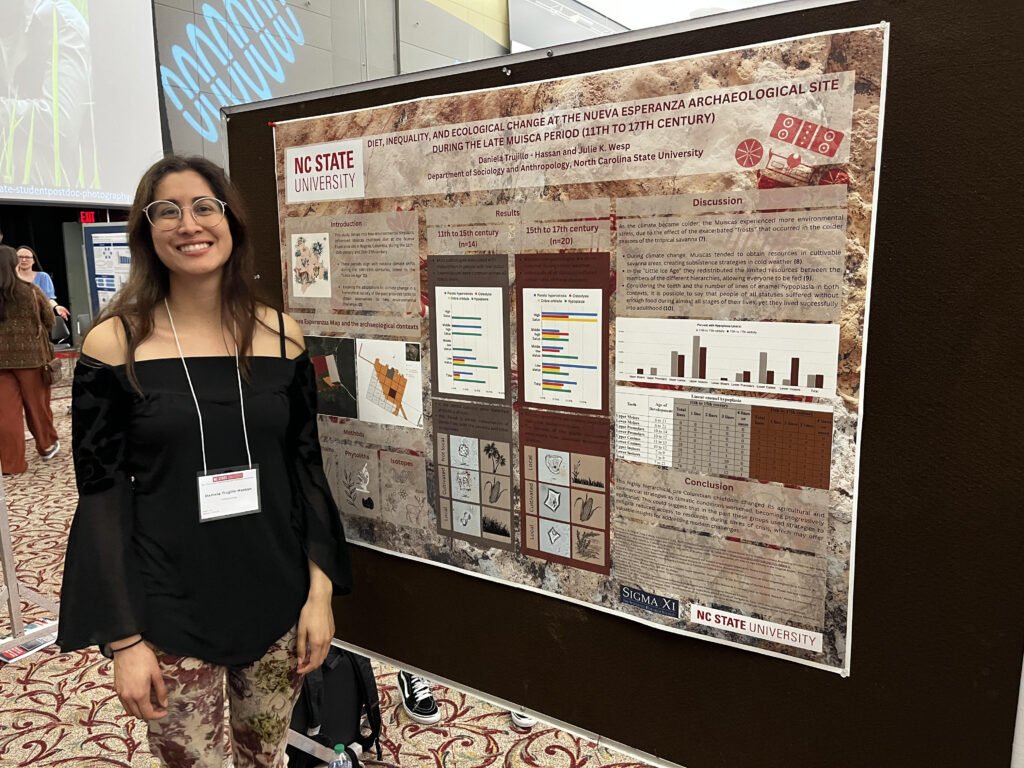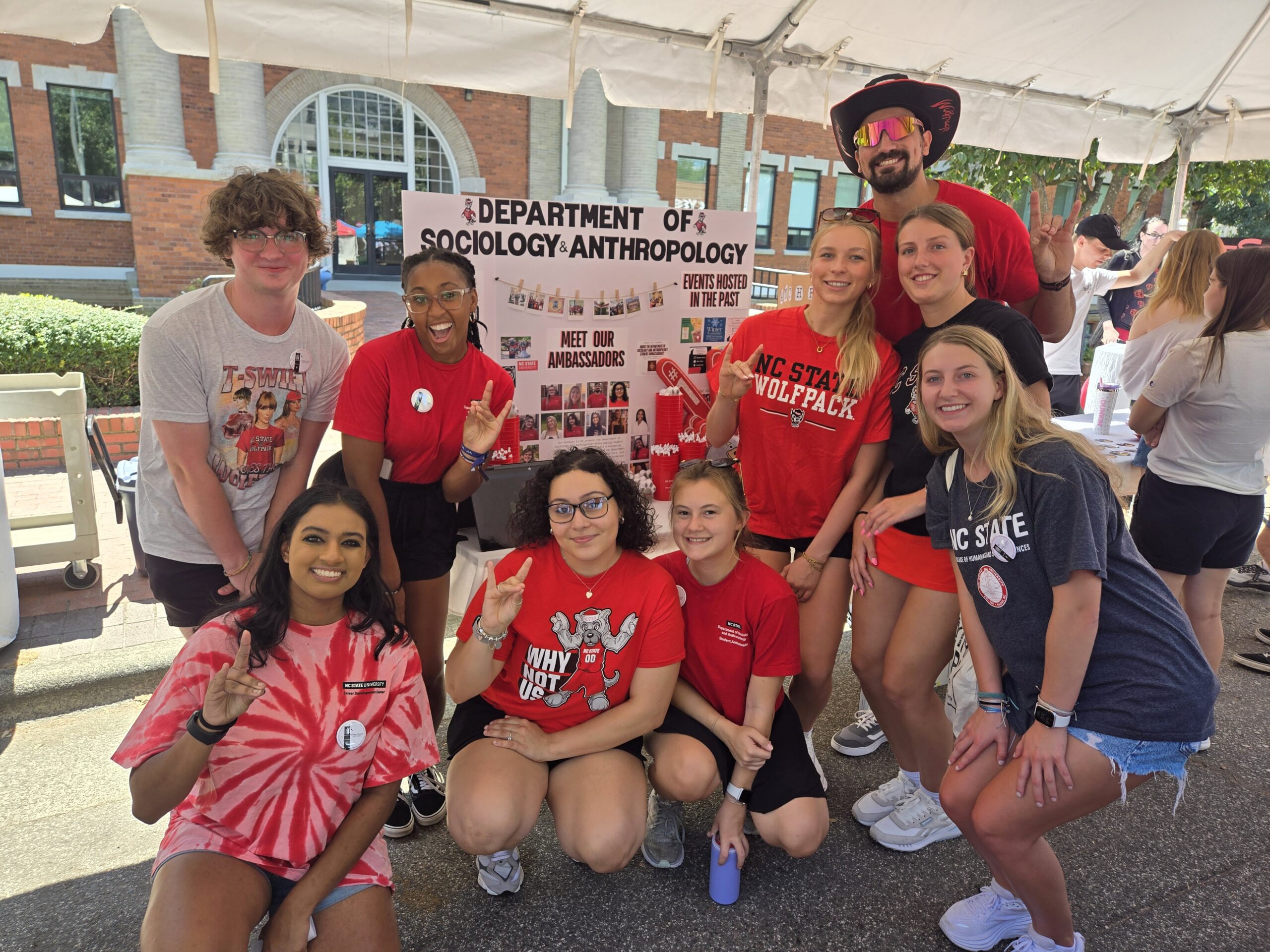On April 3 2024, several Graduate Students from the department of Sociology and Anthropology presented their research at the 17th Annual Graduate Research Symposium. Included in Graduate Appreciation Week activities, Graduate Students from across campus come together to share ideas and knowledge in their various fields at the annual event. In order to be included in this symposium, students had to be nominated by their Director of Graduate Program (DGP). Dr. MIchaela DeSoucey is the DGP for Sociology, and Dr. John Millhauser is the DGP for Anthropology.
“The Graduate Student Research Symposium, held each spring, includes poster presentations from more than 190 graduate students from NC State University. Posters are judged by faculty, and students receive recognition for top posters. The goals are to showcase the outstanding quality and diversity of graduate-level research at NC State, in addition to providing students with the opportunity to practice and enhance their communication skills with those outside of their discipline.” https://grad.ncsu.edu/students/signature-events/symposium/
Receiving the 1st Place Award for the College of Humanities and Social Sciences is Graduate Student in Anthropology. Daniela Trujillo Hassan. Her research poster was entitled: “Diet, Inequality, and Ecological Change at the Nueva Esperanza Archaeological Site during the Late Muisca Period (11th to 17th century).” Daniela is advised by Dr. Julie Wesp, and is planning on graduating this Summer. Congratulations to Daniela!
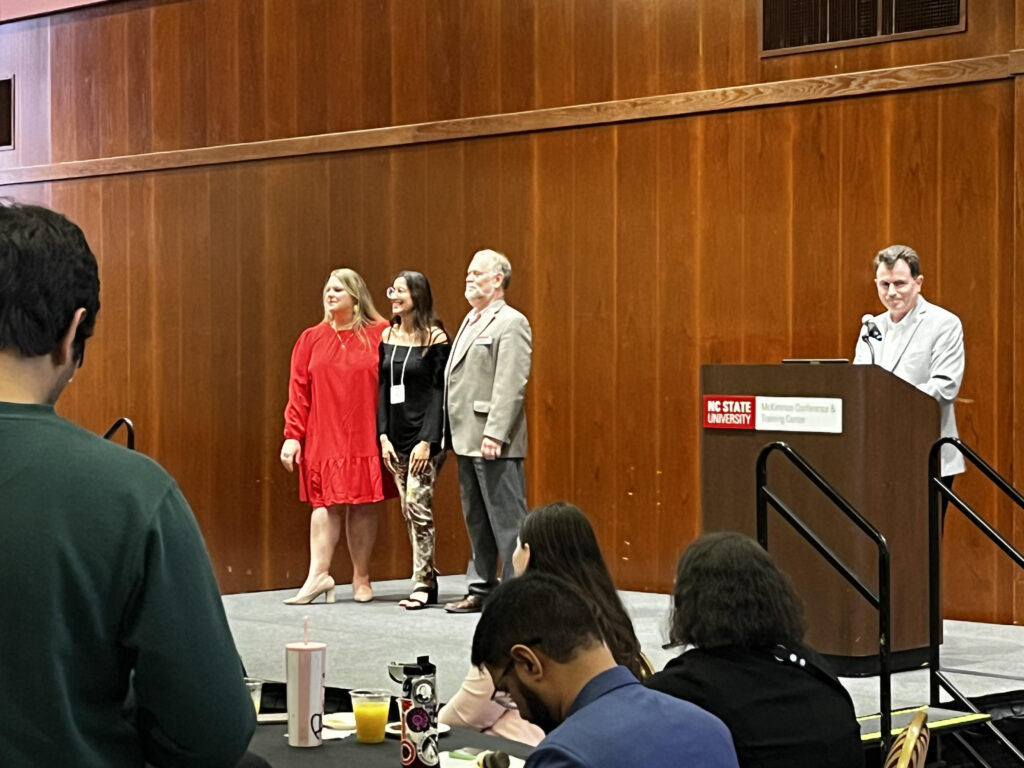
Please see below the 3 students who presented their excellent work at the Graduate Research Symposium. The full program and list of winners can be found on the Graduate School’s website.
Davion Washington, Sociology
“Black Perspectives on White Racial Allyship”
This study takes a critical look at the current state of white allyship in movements toward racial justice and equity, particularly within interpersonal relationships between Black and white Americans. A recent shift in public opinion and perception of racial justice has now fostered increased dialogue on the necessary work of white Americans to bring forth and ensure racial justice and equity. Overall, this study seeks to address the limitations of previous research by highlighting Black voices to examine Black experiences and perceptions regarding white racial allyship, its intricacies, contradictions, possible downfalls, and areas of improvement. Through in-depth interviews with Black and African American student leaders, this qualitative study explains how these student leaders view and define white racial allyship as racial justice movements persist and evolve, how identified white racial allies can and often do continue to perpetuate racial harm, the solutions and improvements that can be identified by the research participants, and lastly, how effectual white racial allyship ultimately is to Black Americans and racial justice movements. These findings are vital in equipping the existing literature on race and allyship with the tools for establishing a growing cognizance of the possible harms of white racial allyship, while also uplifting the necessity and significance of this allyship. This research seeks to position what works well within acts of white racial allyship for these acts to persist, while subsequently positioning what is harmful and does not work within acts of white racial allyship for these acts to cease.
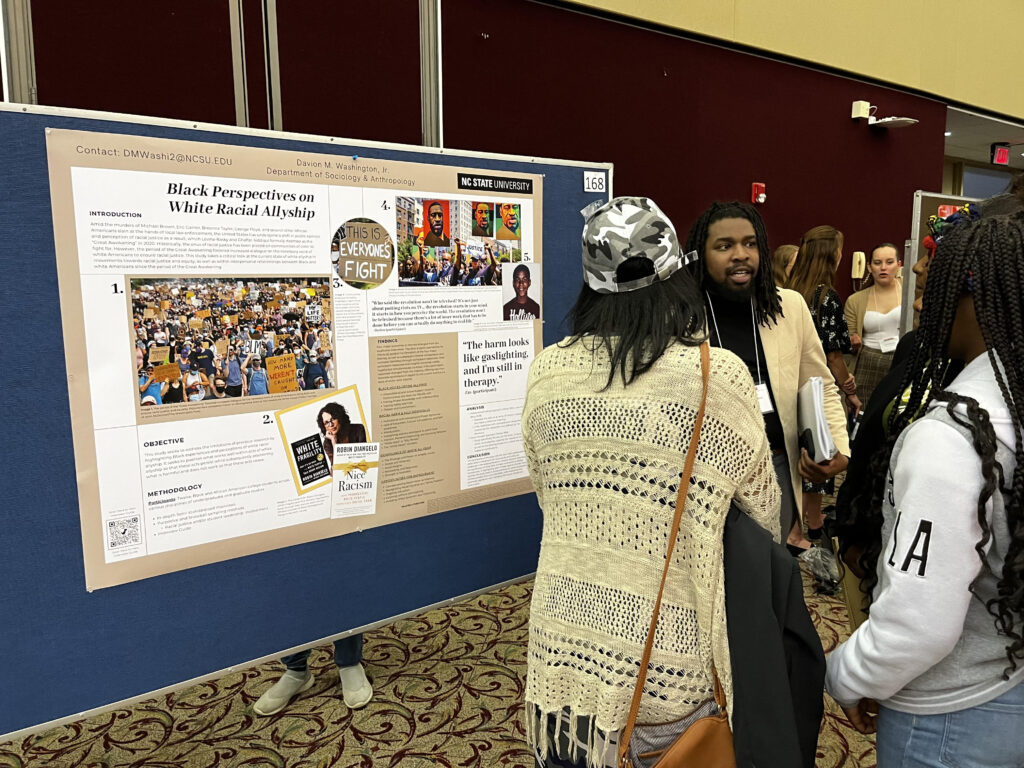
Sarah Dixon, Anthropology
“The Extension of the Physical Body: Embodiment in Virtual Reality”
This project investigates embodied experiences in virtual reality (VR) environments by studying the users’ relationship with their avatar (i.e. their VR character), uncovering how users feel physically connected to the virtual world. Drawing from information gathered from 15 interlocutors and theories of the cultural phenomenology of embodiment, this research argues that through experiences of embodiment in VR, especially that of phantom sense (in which users experience physical sensation in response to virtual stimuli), real and virtual worlds exist in parallel with one another. Findings reveal how the mind and body are able to connect users’ virtual and real bodies through action, presence, and perception. Not only are these classic characteristics of embodiment, but these components are crucial in the curation of phantom sense. Experiences of phantom sense further erode distinctions between real and virtual, rearranging our perceptions of reality and the physical body. The immersive experience of VR demonstrates the impact of manufactured experiences in VR, and how it can shift our understanding of the body. Presentation of findings will also include novel insights and strategies for conducting ethnographic fieldwork in VR — a uniquely challenging venue for ethnographic work that remains largely under-addressed in literature. This poster will exhibit a practical means to assist other researchers who aim to study virtual social worlds as we embark further toward transcending physical boundaries.
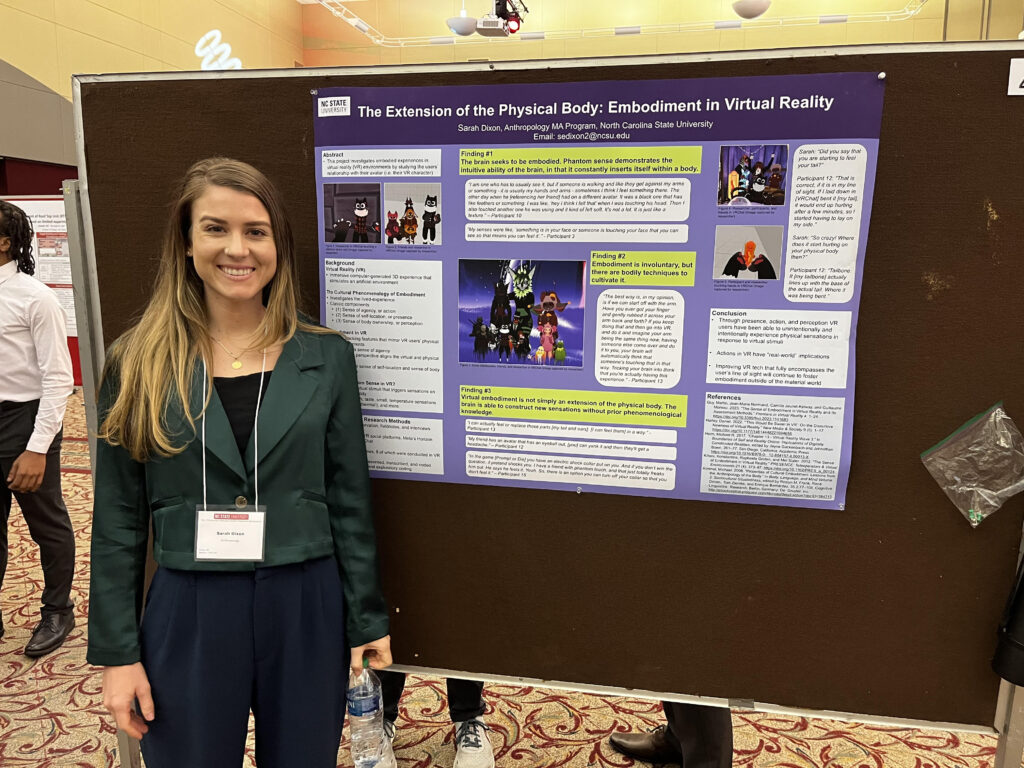
Daniela Trujillo Hassan, Anthropology
1st Place Award, College of Humanities and Social Sciences
“Diet, Inequality, and Ecological Change at the Nueva Esperanza Archaeological Site during the Late Muisca Period (11th to 17th century)”
This study examines the impact of environmental stressors on the dietary practices of the Muisca society at the Nueva Esperanza archaeological site, situated in the Sabana de Bogotá, Colombia, during the Late Muisca Period (11th century to 17th century). This time frame coincides with significant climate changes associated with the onset of the “Little Ice Age,” which profoundly affected human interactions with agriculture and access to natural resources in both the northern hemisphere and equatorial regions. Conducted at North Carolina State University and financially supported by Sigma Xi, this research collaborates with Minuto de Dios University in Colombia. With the aim of understanding the ecological interactions inherent in food intake and their implications for societal adaptations within this pre-Columbian group, this exploration, employed a multiproxy analysis encompassing stable isotopes of δ15N and δ13C, the identification of phytoliths in dental calculi, and the study of skeletal pathologies associated with nutrition. These methodologies were applied to 35 individuals from two occupations during the Late Muisca Period: occupation 4 (n=13) representing the onset of climatic changes (11th to 12th century) and occupation 13 (n=22) reflecting the coldest weather effect (15th to 17th century). The central hypothesis guiding this research suggests that, prior to the arrival of the Spanish colonies, this hierarchical group experienced a transformation in their dietary habits over time. Preliminary results indicate that as the climate became colder, this chiefdom adopted more egalitarian dietary practices and a more equitable distribution of resources within various segments of society. These findings underscore the societal adaptability to climatic adversities in this group, suggesting greater dietary flexibility and adaptation to more hostile conditions.
